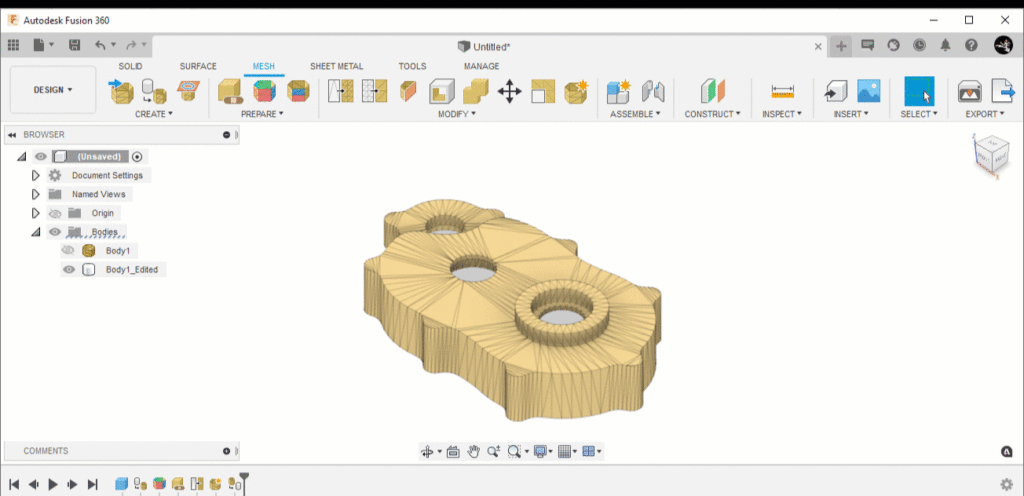Elevate your design and manufacturing processes with Autodesk Fusion
This post is also available in: Français (French) Italiano (Italian) Deutsch (German)
This article debunks common myths about and provides recommendations for troubleshooting common Fusion 360 performance issues.
We sometimes hear from members of our community that they are running into performance issues with Fusion 360. We’ve noticed some common themes and would like to address some of the most frequently brought-up topics, along with tips for how to address them if you ever experience a performance issue firsthand.
If you find yourself with a performance issue, here are our top recommendations for troubleshooting.
1. Don’t panic about your setup
Most performance questions we receive are about CAM commands or a specific unresponsive design. If you’re dealing with either of these issues or anything similar, our first piece of advice is not to stress about your internet connection, computer, or OS. As a general rule of thumb, these three things won’t be the root of your issue (unless, of course, you know one of these three things is down).
Fusion’s client is a locally installed cloud-connected client where many operations take advantage of your PC’s local computing power. So, your connection is not going to be the issue if a modeling or CAM command is slow.
Additionally, Autodesk tests its software across many different device types. With Fusion’s recent update to support native Apple Silicon, there is no clear advantage to either Mac or PC in performance. Any laptop or desktop from the past 7 years with Intel, AMD, or Apple Silicon is capable of running well for average projects.
We do, however, recommend paying attention to RAM. Fusion 360’s minimum recommended requirements can be found here.
2. Remember that it’s often just one design
Most performance problems are just one design and not a system-wide issue affecting all designs. The very first thing to confirm is if the performance problem is just one design or any existing or new design. Try opening another design to see if the problem appears there too. Or start a simple new design and try to reproduce the issue there. Confirming this early is the best tip to get on track to solving the issue.
If you narrow down the problem to one design, follow the remaining steps to analyze your design and find the culprit.
3. Fix broken features
If you look at the design and it has many more features, multiple capture position features, and several yellow or red broken features, you likely will see things slow down.

To avoid this issue, we always recommend creating components as external parts and referencing them into assemblies. Additionally, we recommend using joints to assemble components. Utilizing edit-in-place and assembly context tools can also help avoid this common cause of slowdowns. If you make sure to always fix yellow and red features, you’ll likely see drastic performance improvements.
4. Carefully manage complex designs
As sketches get more complex, the more work it becomes to keep everything associative and constrained. Try breaking your design into multiple sketches, adding details in multiple features, and using feature patterns instead of large sketches.
If the design is a massive mesh model that was downloaded as an STL and you are trying to make simple edits, do not try and convert it to a solid. Many common edits can be done directly with the mesh modeling tools. If you absolutely need a solid, try and locate a STEP model rather than an STL. Commercial entitlements of Fusion 360 include additional tools for reverse engineering mesh data to solids.

5. Think twice before turning off history or uninstalling/reinstalling
Fusion 360 includes both parametric and history-free modeling methods. We don’t recommend turning off history when dealing with mesh performance issues because the consequence is losing all associativity between your sketches and your features. This means you can’t roll back and make changes to your timeline to rebuild the model.

Similarly, we recommend following the steps above before trying to uninstall and reinstall Fusion 360. Fusion includes a Service Utility tool that can automate the check and repair of your installation. You do not need to uninstall and reinstall. If your Fusion 360 fails to start, the Service utility is the easiest way to repair it.
If these issues don’t help solve your problem, please reach out to us via the Autodesk forums. Provide us with as many details as you can, including if the problem is for one or all designs, any other workflow details, and screenshots if possible.
Learn more and try Fusion 360
Unlock the full range of possibilities today with Fusion 360. Check out the other articles in this series to explore all that Fusion 360 has to offer:
- Eliminate Silos in Product Development with Autodesk Fusion 360
- From Sketch to Final Product: Autodesk Fusion 360 Design & Engineering Highlights You Don’t Want to Miss
- Powering Your Products: Autodesk Fusion 360 Electronics Highlights You Don’t Want to Miss
- All About CAM: Autodesk Fusion 360 Manufacturing Highlights You Don’t Want to Miss
- Collaborating in Fusion 360: Data Management Highlights You Don’t Want to Miss
Get started with a free 30-day trial: